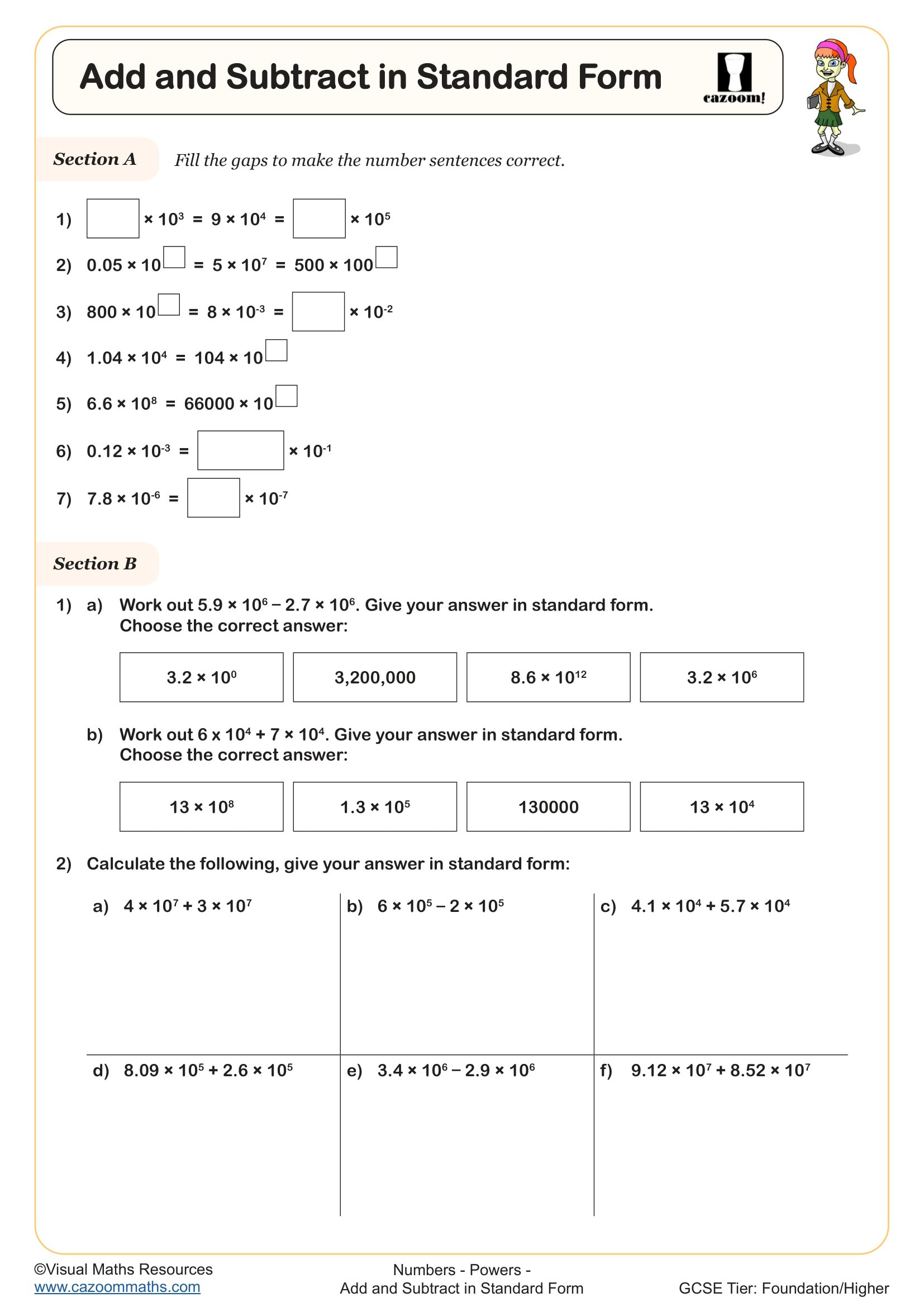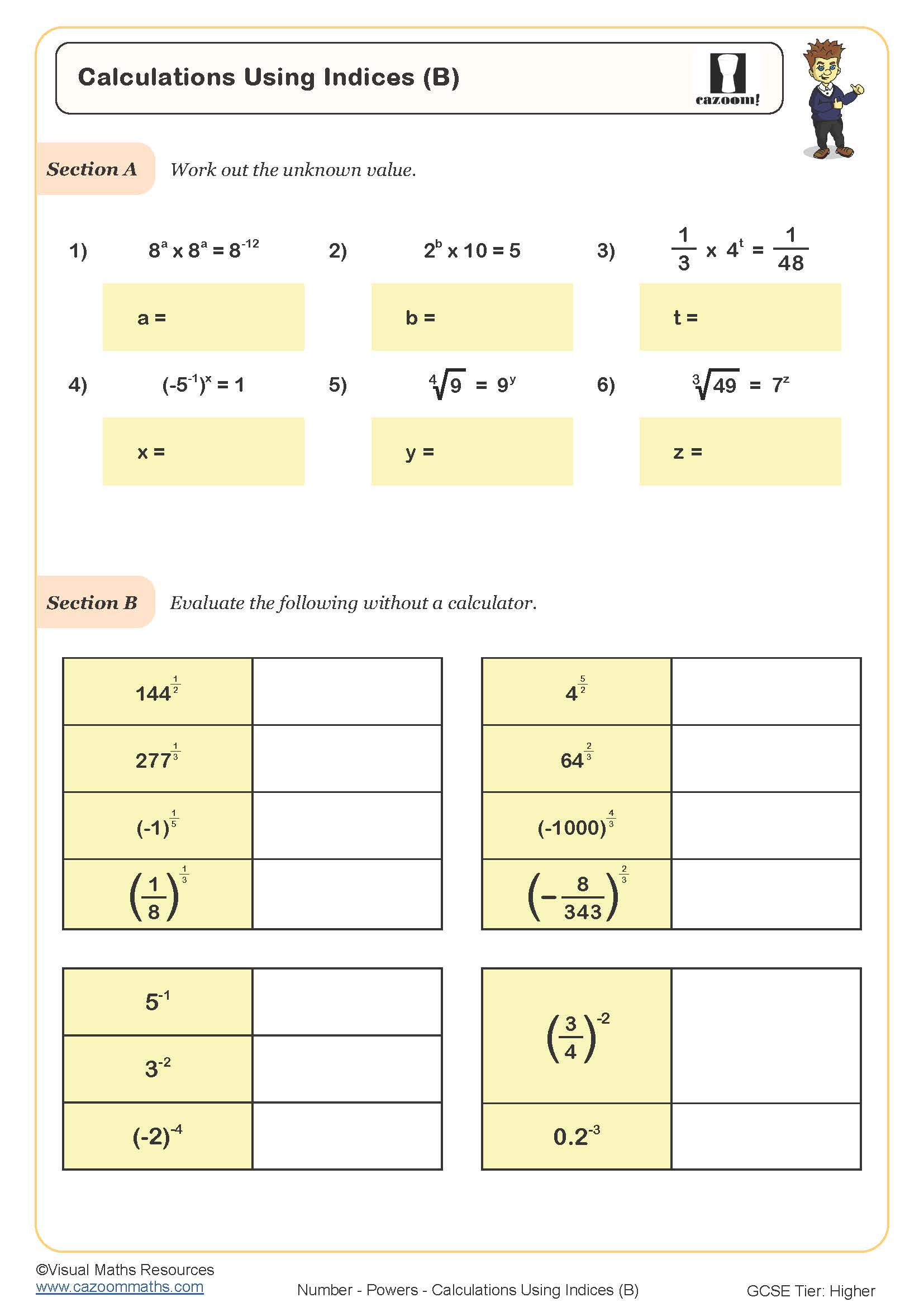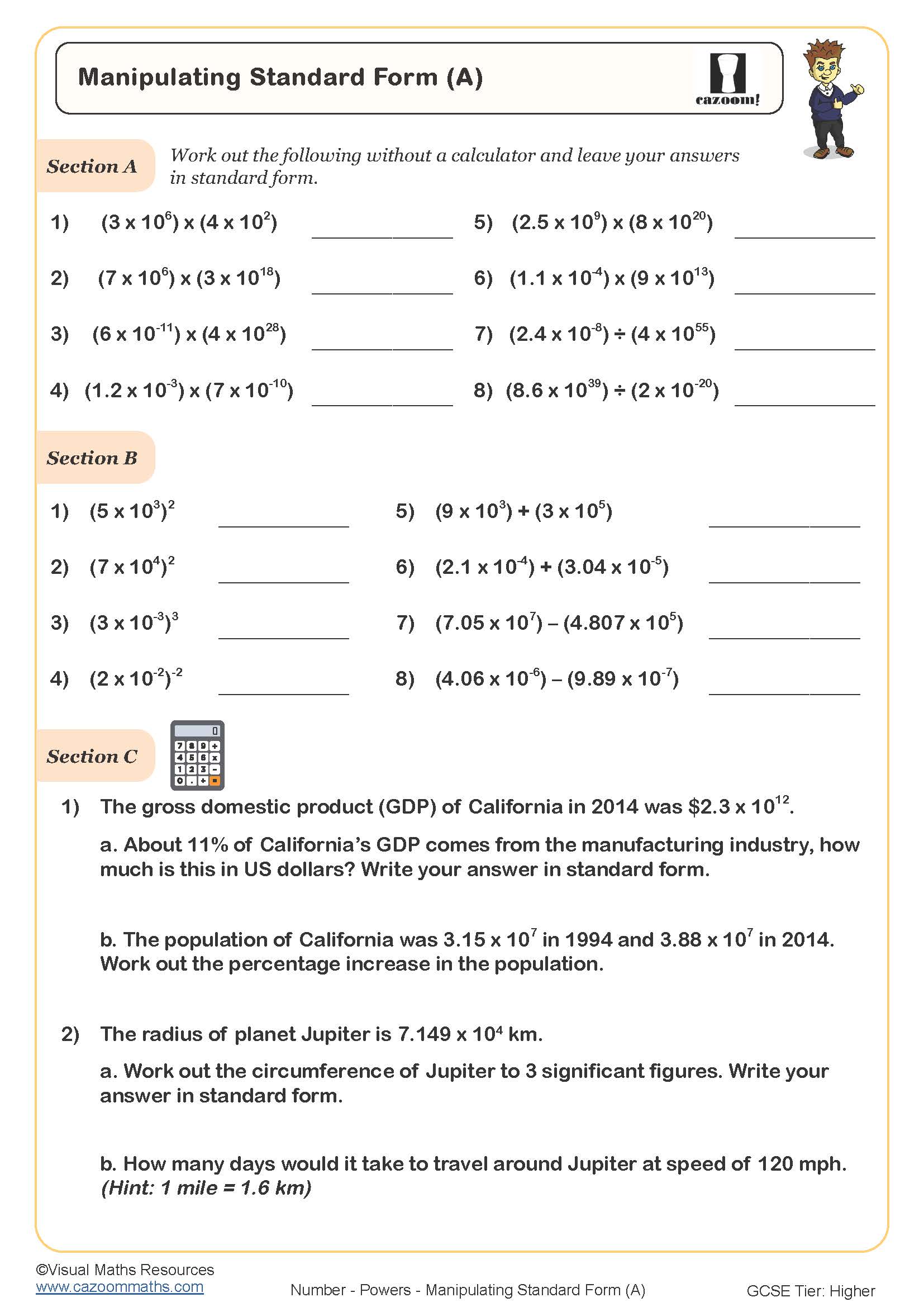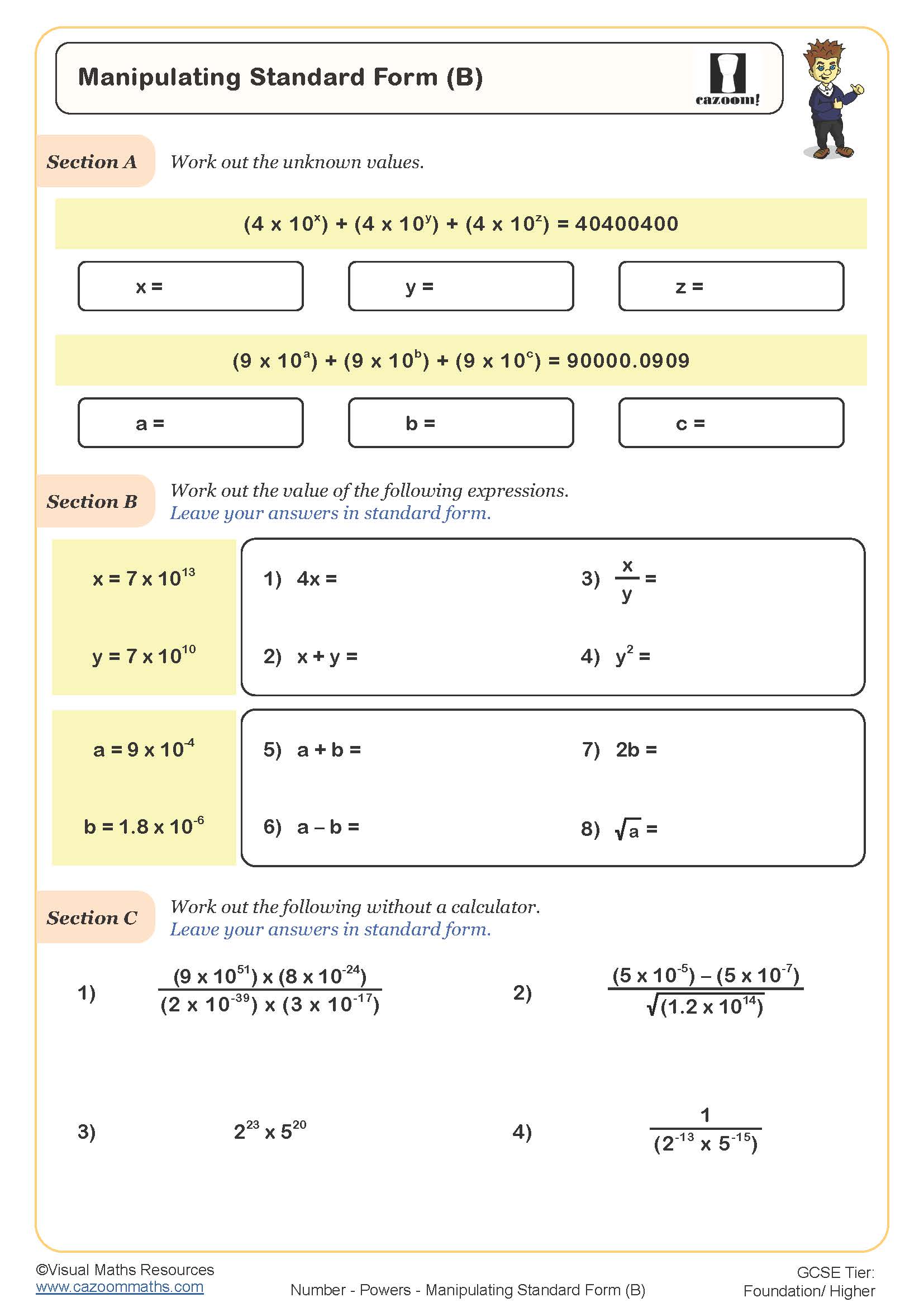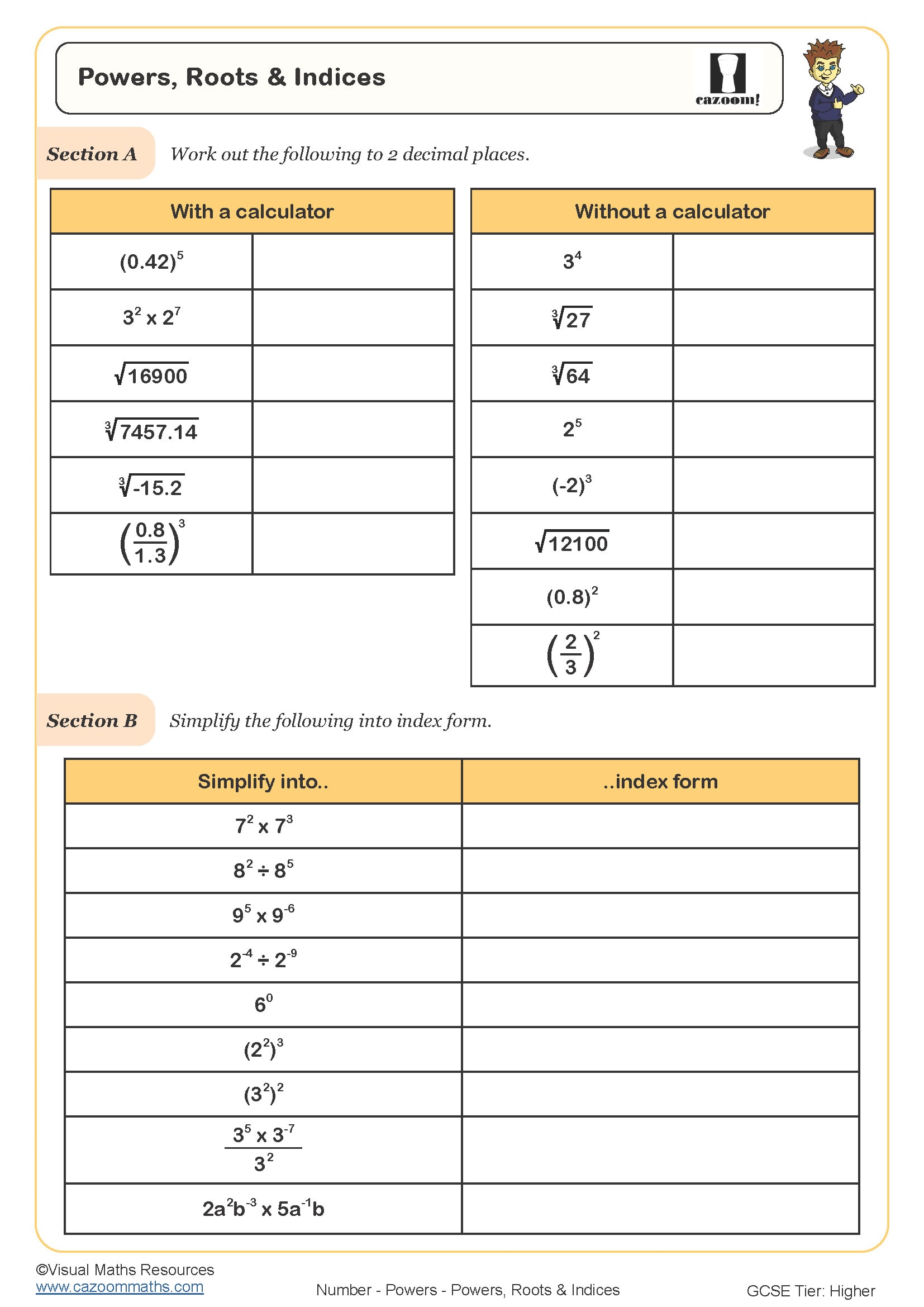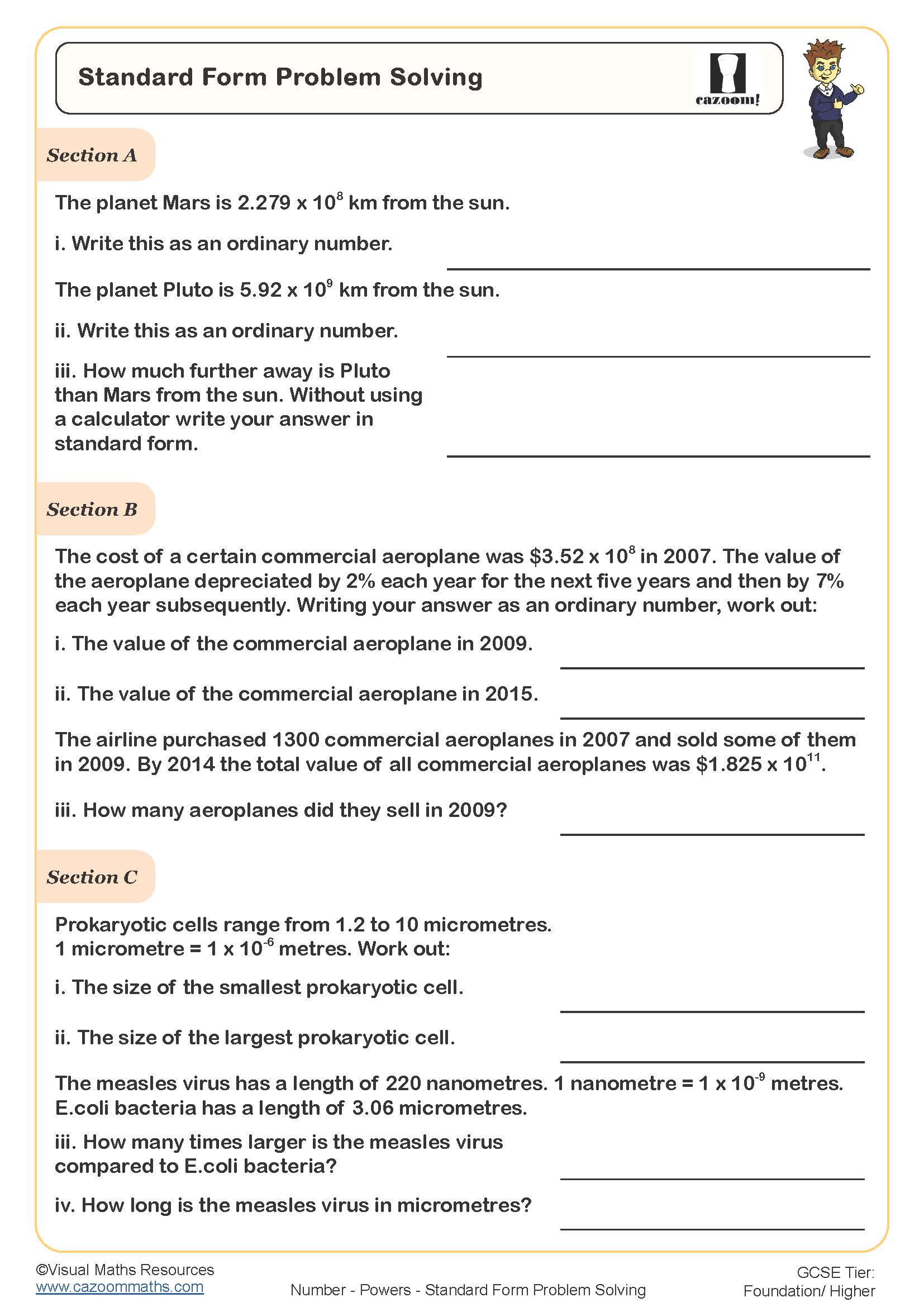Year 9 Powers and Roots Worksheets
Losing Marks in Tests? Our Printable Year 9 Number Resources Help Fix Common Errors
Students who develop strong foundations in indices during Year 9 find themselves better equipped to tackle advanced topics like surds, logarithms and exponential functions at GCSE level. Students need to practice various problem examples to build their skills when moving from basic square numbers to fractional and negative powers. The worksheets help students recognise exponential patterns by practising regularly and teach them proper methods for working with reciprocal and root operations. The methodical approach stops students from developing knowledge deficits, which would worsen their understanding of quadratic equations and geometric sequences. Students learn index laws through practice rather than memorisation of the rules.
These resources provide several particular learning advantages-.
• Master the multiplication and division of indices
• The student learns to work with fractional powers.
• Strengthens algebraic manipulation skills
• Standard form calculations become more precise through the implementation of this method.
• The process establishes the foundation for surds.
• Enhances problem-solving strategies
• Builds mental calculation speed
What Students Practise Step by Step With Year 9 Powers and Roots Worksheets
These worksheets progress from concrete numerical examples through pictorial representations to abstract algebraic expressions, ensuring students grasp underlying principles before advancing to complex problems. The resources provide complete worked solutions that demonstrate step-by-step methods to show how mathematical reasoning leads to calculations. The collection contains multiple question types and real-life examples, which show basic rules and help students identify common errors.
The worksheets in this collection include:
• Add and Subtract in Standard Form — combining numbers in scientific notation accurately
• Manipulating Standard Form (B) — converting between ordinary and standard form representations
• Standard Form Problem Solving — applying scientific notation to real-world contexts
• Calculations Using Indices (B) — solving multi-step problems with index laws
• Manipulating Standard Form (A) — advanced operations with powers of ten
• Powers, Roots and Indices — comprehensive practice across all exponential concepts
Trusted by Educators: Why Parents Value Year 9 Powers and Roots Worksheets Too
UK maths curriculum values our KS3 number activities for their classroom versatility, offering much-needed differentiation by using gradually increased difficulty levels that accommodate a wide range of concepts within single lessons. The structured progression enables students to work independently while teachers focus their support on the exact areas where students need the most help. The combination of method and final answer on answer sheets allows teachers to identify procedural mistakes from conceptual errors, thus making time-efficient marking possible. The worksheets work with current lesson plans to offer dependable additional content that supports curriculum learning goals. Students must solve computational problems and reasoning questions to succeed in the assessment because these types of questions develop their technical abilities and mathematical reasoning skills.
Connecting Exponential Mathematics to Career Pathways and Technology
The knowledge of powers and roots enables access to various domains which depend on exponential relationships for their core operations, including computing and scientific investigations. Students encounter binary systems and logarithmic scales in their daily use of modern technology, yet they lack an understanding of the underlying mathematical concepts.
For example-
• Database indexing using logarithmic search algorithms
• Sound engineering requires the application of decibel calculations for its operations.
Investment banking compound interest models
• Seismology uses earthquake magnitude measurement techniques.
• Scientists need to determine the enormous distances between celestial bodies when conducting space exploration.
• Medical imaging techniques rely on exponential decay rates for their operation.
• Climate modelling with growth projections
